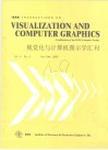版权所有:内蒙古大学图书馆 技术提供:维普资讯• 智图
内蒙古自治区呼和浩特市赛罕区大学西街235号 邮编: 010021

作者机构:Hong Kong University of Science and Technology Hong Kong Harvard University United States Carnegie Mellon University United States University of Edinburgh United Kingdom
出 版 物:《IEEE Transactions on Visualization and Computer Graphics》 (IEEE Trans Visual Comput Graphics)
年 卷 期:2023年第29卷第1期
页 面:418-428页
核心收录:
学科分类:0808[工学-电气工程] 081203[工学-计算机应用技术] 080103[工学-流体力学] 08[工学] 0835[工学-软件工程] 0812[工学-计算机科学与技术(可授工学、理学学位)] 0801[工学-力学(可授工学、理学学位)]
主 题:Data visualization
摘 要:This paper presents a design space of interaction techniques to engage with visualizations that are printed on paper and augmented through Augmented Reality. Paper sheets are widely used to deploy visualizations and provide a rich set of tangible affordances for interactions, such as touch, folding, tilting, or stacking. At the same time, augmented reality can dynamically update visualization content to provide commands such as pan, zoom, filter, or detail on demand. This paper is the first to provide a structured approach to mapping possible actions with the paper to interaction commands. This design space and the findings of a controlled user study have implications for future designs of augmented reality systems involving paper sheets and visualizations. Through workshops ($\mathrm{N}=20$) and ideation, we identified 81 interactions that we classify in three dimensions: 1) commands that can be supported by an interaction, 2) the specific parameters provided by an (inter)action with paper, and 3) the number of paper sheets involved in an interaction. We tested user preference and viability of 11 of these interactions with a prototype implementation in a controlled study ($\mathrm{N}=12$, HoloLens 2) and found that most of the interactions are intuitive and engaging to use. We summarized interactions (e.g., tilt to pan) that have strong affordance to complement point for data exploration, physical limitations and properties of paper as a medium, cases requiring redundancy and shortcuts, and other implications for design. © 2022 IEEE.